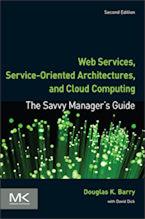Navigating Objects
Dr. Stonebraker has also provided a way for classifying DBMSs based on performance on complex data. He mentioned this during a question and answer session at the Object/Relational Summit in Boston in August, 1997. He said, "My point of view is that if you want to navigate your objects in C++, object databases do that blindingly fast -- way faster than a relational or an object-relational engine." (This was before Java became popular.) Listen to Dr. Stonebraker: Stonebraker.mp3.
Let's look at what it means to navigate objects. The following figure shows a few instance objects that are part of a database of parents, children, and addresses. The arrows show the relationships among the instance objects. Moving from one instance to another along the arrows is navigation. Languages such as C++ and Java provide ways to navigate among objects. The speed of this navigation is what Dr. Stonebraker describes as the strength of ODBMSs.

Querying object structures such as this requires navigation. See the query navigation page and then we will create a better DBMS Matrix.
Context for Navigating Objects
Related Articles for Navigating Objects
Author
Douglas K Barry
Principal
You may use this material for your work or classes. Reprint Policy. Be sure to check the menu at the left for other articles available on this site.
The Savvy Manager's Guide
Douglas K Barry is also the author of a book that explains Web Services, service-oriented architecture, and Cloud Computing in an easy-to-understand, non-technical manner.
Web Services, Service-Oriented Architectures, and Cloud Computing: The Savvy Manager's Guide (Second Edition)
by Douglas K Barry with David Dick
This is a guide for the savvy manager who wants to capitalize on the wave of change that is occurring with Web Services, service-oriented architecture, and—more recently—Cloud Computing. The changes wrought by these technologies will require both a basic grasp of the technologies and an effective way to deal with how these changes will affect the people who build and use the systems in our organizations. This book covers both issues. Managers at all levels of all organizations must be aware of both the changes that we are now seeing and ways to deal with issues created by those changes.

